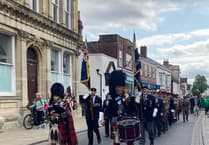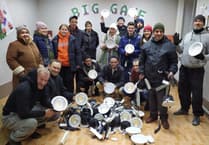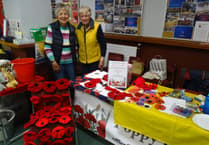“SIX men died in the bed next to me. ‘Bingo bashing’ happened every day; Kinkaseki was the most brutal of the Japanese camps.”
The six died during Ken Pett’s years in the mining camp on the island of Taiwan, known at that time as Formosa.
The Second World War veteran believes that of the 523 prisoners of war (PoW) interred in Kinkaseki in 1942 he was one of just 113 still alive when the war ended in 1945.
About 700 more prisoners replaced those who died.
Ken, now aged 95, said: “We were each given a number at the camp.
“Before leaving the copper mine at night we were lined up and the guards would call out numbers.
“Those men had to hold on to a pipe along the wall and were beaten. We called it bingo bashing, because the numbers were called out like bingo. It happened every day.
“I had five ribs broken like that. I was also beaten with a bamboo cane like a whip; the doctor who saw the scars on my back was horrified.”
When Ken was freed in 1945 he was at death’s door, sick and at times semi-conscious.
He said: “I weighed four stone 10lb. I can’t remember much about that time.”
Ken was one of the most malnourished survivors of the 16 camps on the island.
Born in Petersfield and now living in Stafford Road, he joined the Territorial Army in 1937, his unit being based in the Petersfield Drill Hall in Dragon Street.
When war began in 1939, he transferred to an anti-tank regiment as a gunner and dispatch rider.
The regiment arrived in Malaya just before the Japanese invasion, the speed of which forced the British to evacuate to Singapore.
The battle for the island lasted just a week after the Japanese landed on February 8, 1942, and around 85,000 Allied troops, including Ken, became prisoners of war.
While in Singapore he witnessed Chinese civilians being beheaded and machine gunned by Japanese soldiers.
Finally thousands of prisoners were shipped off to camps closer to Japan.
He said: “They were known as ‘hell ships.’ For the 17-day voyage we had to stand in the hold, there wasn’t room to sit or lay down and Japanese soldiers would urinate into the hold on to us.
“Once a day we were allowed to use the latrine, which hung over the stern of the ship. A lot of us had dysentery, and the results got blown over you.”
In Taiwan they were marched to Kinkaseki camp and the mine.
Forced to work naked apart from cloth shoes and loin cloths, and enduring daily beatings, they were fed the bare minimum of rice, vegetable water and tiny fish.
As the war turned against Japan in March 1945, the mine closed, and the prisoners were marched into the mountains to Kukutsu.
The Taiwan Camps Memorial Society says Kukutsu was “basically an extermination camp for the remaining Kinkaseki PoWs.”
Ken said: “We slept on the ground, until we built huts out of what we could find.
“What food we had was collected from a village many miles away down the mountain and had to be carried back to the camp in packs.”
After years of deprivation his strength gave out, and after one such march he collapsed.
While he was sick, the Americans dropped atomic bombs on the Japanese cities of Hiroshima and Nagasaki and the war ended, in August 1945.
The memorial society adds: “If the war hadn’t ended when it had, they would probably all have died at Kukutsu.”
Ken, by now seriously ill, was transported by an American aircraft carrier to Manila, and then by sea to San Francisco. He came home to Britain aboard the Queen Mary liner, its last voyage as a troop ship.
After the war, Ken remained in the Territorial Army for some years, and worked as a Post Office telephone engineer, married, and had children, and now has grandchildren.
He has been back to Taiwan several times, and to Japan, to unveil memorials to the PoWs and give talks about the camps.
He said: “I can forgive, but I can’t forget.”



.jpeg?width=209&height=140&crop=209:145,smart&quality=75)

Comments
This article has no comments yet. Be the first to leave a comment.